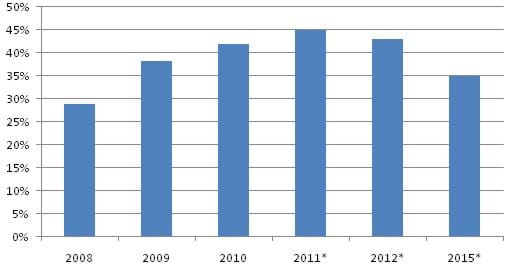- Government of Montenegro
Blog: The Black Debt
Please note: The page below represents the archived content relating to the previous Government of Montenegro. Some of the information might be inaccurate or outdated.
Archive
Blog: The Black Debt
Published on: Sep 18, 2011 • 8:30 PM Author: Bureau
During the 14th century the population of Europe was decimated by an epidemic that seemed to come out of nowhere and all of a sudden took the life of every second person on our continent. Some historians suggest it was due to the religious prosecution of cats as symbols of bad luck and devilry that had taken place beforehand so rats could spread disease and plague could fester. The population needed more than a century to recover from the three years of terror, but the world would never be the same again. At that point, medieval society lacked not only the answers, but even the correct questions about the causes of the pandemic; its distress many times turned into fanaticism and acts of pure brutality.
For most people today’s debt pandemic came as suddenly as of the one during the Middle Ages. Economies were damaged by the global downturn, jobs disappeared, credit lines imploded, balance sheets collapsed as the burden of the debt on households, firms and state budgets became unbearable - debt levels that used to be easily manageable then suddenly started to seem simply too much.
Of course, debt in itself is not necessarily bad. When income is low expenditure has to be kept high in order to help the neediest in society and give an extra boost to the economy – that means more debt in absolute terms. When the level of domestic production falls, the relative burden of public liabilities grows – that means more debt in relative terms. Eventually someone has to pay the price; politicians and economists have to cling to the hope that the moment of truth will come only when the economy is back on track, and they can somehow handle the process to avoid hard landings. As for now, debt crises in Europe seem to spread as the plague did when it appeared – first following the path of Mediterranean sailors and merchants. Now Europe needs cooperation and discipline to contain the menace and prevent the disease from reaching the continental economy’s vital organs. It also takes breeding cats as a long-term prevention – structural reforms and the improvement of the business environment to regain competitiveness along with financial and fiscal stability.
Critics of economic policy often fail to take into consideration that a growth of debt in times of crisis is virtually inevitable. Economic agents hate fluctuations; hurried adaptation to new circumstances is always painful and costly. When the shape of the economy is changing overnight, the government has to step in with its credibility and its (limited) power to organize.
A small country, like Montenegro, relies very heavily on movements in the global economy. Despite the tremendous underlying growth potential, fluctuations in our national income are volatile, but the government has to prevent the living standards of our citizens moving together with those figures. That is why we cannot and should not cut expenditure in line with the decrease in income on a one-to-one basis, and that is why in some areas we have to extend spending even if we have to rely on our credibility and the firm belief that recovery will eventually come. We have seen in the boom of 2006-2008 that the debt burden can easily be reduced in good times. Now there are bad times, but our discipline will prevent the debt from getting out of control. According to calculations carried out by the Ministry of Finance, this year we are experiencing the peak in the crisis-related growth in Montenegrin public debt at 45% and even this year it will be nowhere near most European countries (short comparison: Germany and the UK are over 70%, the United States is approaching 100%, Greece is over 130%). If we were in the European Union, Montenegrin fiscal policy could easily have been held up as a model. From next year onwards, we estimate that the debt level will gradually decline, reaching its pre-crisis level as early as 2015. Present data suggest that the plague of indebtedness will not reach the Montenegrin shore. Until then one should know that the alternative to running larger than usual deficits and accepting a larger debt level for a limited period of time is implementing drastic expenditure cuts and tax hikes that would improve fiscal numbers but seriously bruise the fabric of society. Would those who propose immediate deficit cuts undertake such unprecedented austerity measures? I doubt it.

Level of the debt to GDP ratio over time (*: projected data)
It is an important lesson from history, that the Black Death was primarily not defeated by the power of modern antibiotics: the turning point in the battle happened well before the revolution of medical science. Some historians argue that the plague was countered with order. The threat that the plague posed to society slowly but irrevocably revolutionized the way governance worked. It turned out that the epidemic could be contained even without knowing what caused it by better organization, better institutions and measures to improve public sanitation. Disease outbreaks would happen again from time to time, but Europe as a whole became a safer place to be.
Today’s debt plague will surely go down into the history books and become a bad memory and a good lesson to learn. Economists will know what the world did wrong and what proved to be the safe way out. Writers of economics textbooks will be indebted to those countries whose fiscal policy in recession can be quoted as a case study for good practice. I hope Montenegro will be included in one of those chapters.
Igor Luksic, Prime Minister
Related articles:
Is this page useful?
